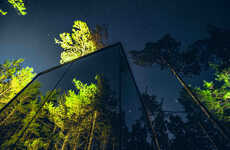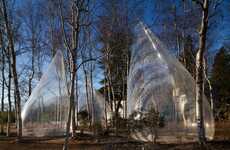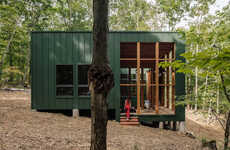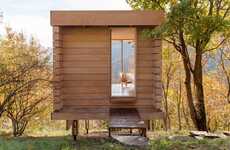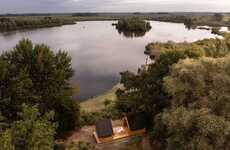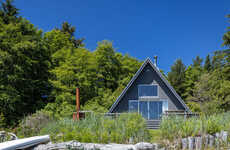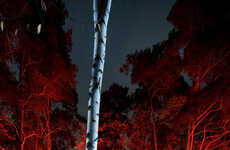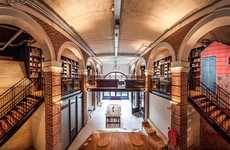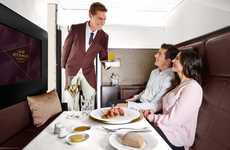
This Cabin Sits on the Surface of Water and Features Missing Panels
Ady Floyd — August 7, 2015 — Art & Design
References: elise-morin & dezeen
Designers Elise Morin and Florent Albinet created this mystical floating hut that features a number of missing wall panels. The missing wall panels allow visitors to see clearly through the single-roomed cabin and penetrates the space with natural light.
The original idea for the floating hut -- named the 'Walden Raft' -- was inspired by American author Henry David. The cabin appears transparent and is made entirely of wooden pine panels and pieces of acrylic glass. The structure's materials make it weather-resistant while its polyethylene base acts as its floating support system.
Measuring 10 square meters, the boxed cabin structure is connected to a cable that allows it to move from land to the center of a lake. Visitors are able to move the cabin as they please, making it practical for the adventurous traveler.
The original idea for the floating hut -- named the 'Walden Raft' -- was inspired by American author Henry David. The cabin appears transparent and is made entirely of wooden pine panels and pieces of acrylic glass. The structure's materials make it weather-resistant while its polyethylene base acts as its floating support system.
Measuring 10 square meters, the boxed cabin structure is connected to a cable that allows it to move from land to the center of a lake. Visitors are able to move the cabin as they please, making it practical for the adventurous traveler.
Trend Themes
1. Translucent Architecture - Architects and designers can explore the use of translucent materials in their structures to create unique and visually stunning designs.
2. Floating Architecture - Innovative architects can create sustainable, floating structures that can serve as unique homes, offices, or tourist accommodations.
3. Portable Architecture - Engineers can design portable, modular, and scalable structures that can serve diverse functions such as offices, hotels, and educational facilities.
Industry Implications
1. Architecture - Architecture and design firms can leverage translucent and floating structures to foster a new era of eco-friendly and distinctive living spaces.
2. Tourism and Hospitality - The tourism and hospitality industry can create unique experiences for guests by investing in floating and portable accommodations that enable diverse and off-the-beaten-path destinations.
3. Real Estate Development - Real estate developers can explore innovative property developments on water bodies with increasing land scarcity and eco-conscious consumers seeking alternative living.
3.6
Score
Popularity
Activity
Freshness

